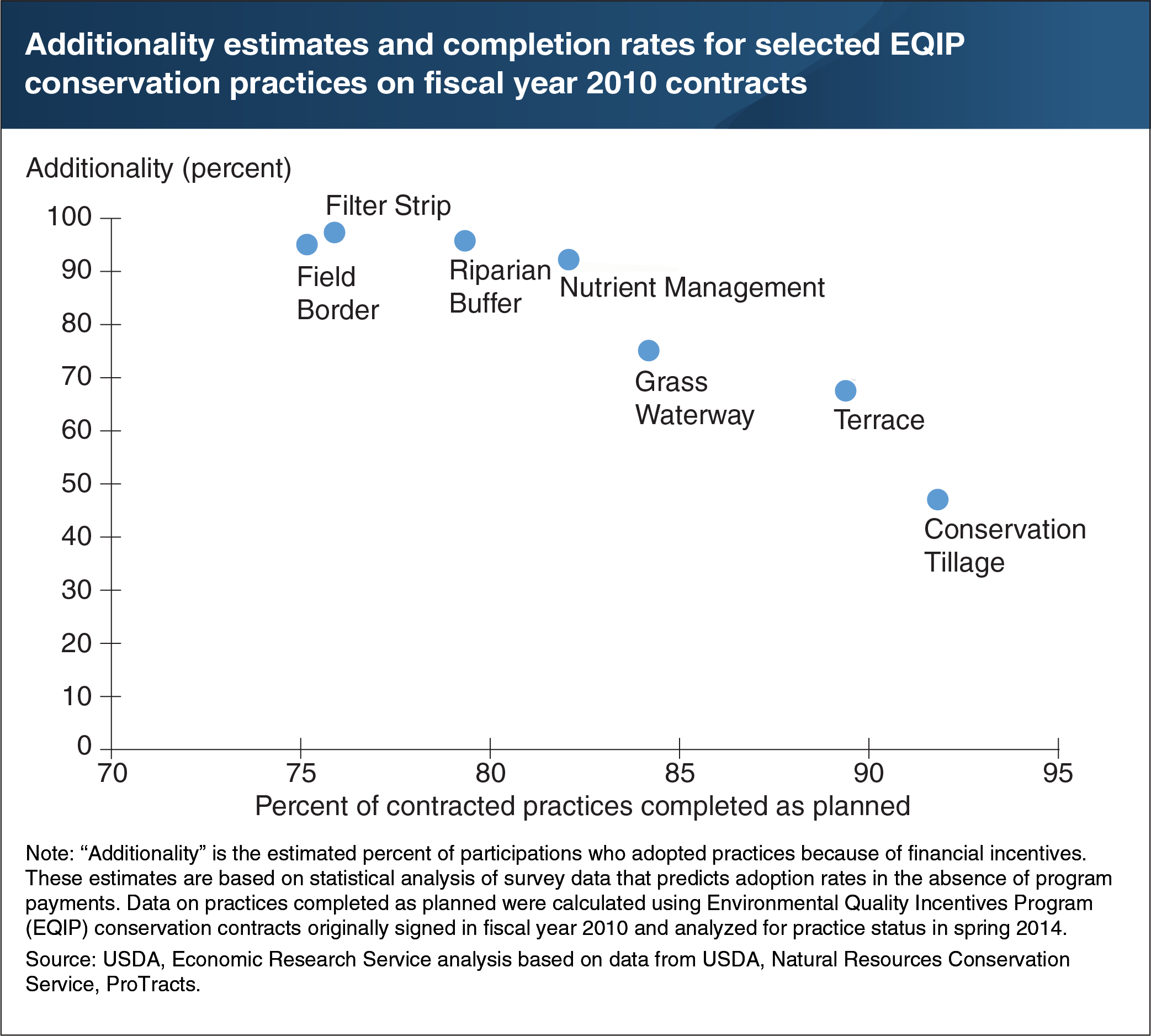Lower completion rates for contracted practices are associated with greater impacts on participant behavior
- by Steven Wallander and Roger Claassen
- 3/26/2019

The Environmental Quality Incentives Program (EQIP) and other USDA working lands programs provide payments to farmers and ranchers who sign contracts to adopt certain conservation practices. Most contracted practices are implemented as planned. But some types of practices, such as installation of field borders and filter strips, are less likely to be completed. While USDA can reallocate funding that would have gone toward uncompleted practices, modifying contracts requires additional USDA staff resources and leads to delays in getting conservation efforts on the ground. However, there is a tradeoff between practices that have higher rates of completion and practices that have higher rates of “additionality.” Additionality is a measure of payment effectiveness that estimates the percentage of producers who adopted the practices because of the financial assistance. This research shows that practices that are less likely to be completed tend to have higher additionality. All efforts to incentivize behavior face a challenge in achieving greater additionality because it is difficult for program managers to observe the private incentives to adopt practices in the absence of payments. The tradeoff between additionality and completion rates is a direct reflection of these hidden incentives. One implication of this research is that practice completion rates, which can be easily calculated using program administrative data, could be used as an indirect measure of additionality. This chart appears in the ERS report, Working Lands Conservation Contract Modifications: Patterns in Dropped Practices, released March 2019.
We’d welcome your feedback!
Would you be willing to answer a few quick questions about your experience?

